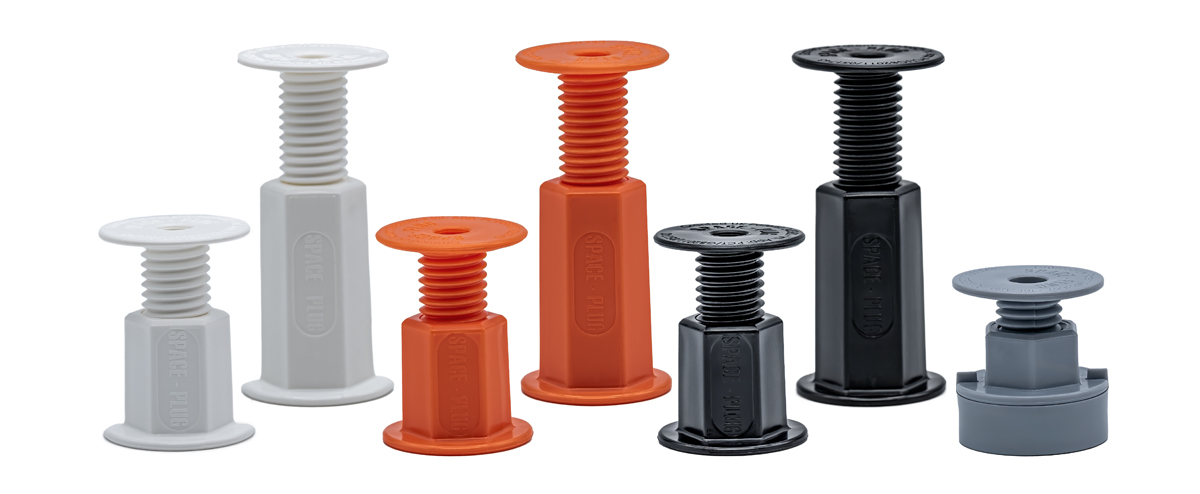
Time for a cuppa and some avoidance! Kettle on and launch into a conversation with our nearest and dearest. Mother-in-law’s impending visit! The kids’ current school project. Clean out the gutters! Anything, to avoid the daunting prospect of putting these confounding jigsaws together. Before we even attempt the all-important task of attaching them to the walls!
Faced with such an onerous task? Most of us will appreciate any tips on kitchen cabinet installation. First we have to understand how the units themselves are actually fitted together. As a starting point what we need is a step by step guide to fitting all the components together!
This usually comes in the form of an accompanying diagrammatic booklet! Written in several different European languages! The most prevalent of which often seems to be Double Dutch!
Over the years I have inflicted kitchen cabinet assembly upon myself several times. I should have had a swear box ready to hand! A sizeable amount of money would be in it by now. Enough for sure to pay a professional next time!
So when faced with dozens of cardboard packages where do you begin? I've learned over the years and here’s my step-by-step guide.
1. Sort through everything
Often the individual components which make up each separate cabinet may not be in a single large box. Likey they are in half a dozen or so smaller packages.
Want to save a great deal of time and energy in the long run? Before you even open a single box take the time and trouble to identify which boxes go together. Place them in separate piles.
Space is essential. Whether you are undertaking the work in a new built space or in a gutted old existing kitchen. You want to working in an empty room.
Identify a wall which will not be part of your new kitchen plan. Line the boxes up in separate piles, with each one corresponding to an individual cabinet.
If you don’t have space to do this in the kitchen, a good alternative is to use the hallway in the house. It can be ideal. A long, narrow passageway to line the boxes up starting with the unit you will be making up first.
Tip: NEVER open more than one set of boxes at a time. Construct your first unit and then only move on to the next when finished. It avoids wasting time and so much unnecessary frustration.
2. Gather together the required tools.
Before you even start, gather together all the tools that you are likely to need. , making sure that you have screwdrivers with an assortment of different heads.
It never ceases to amaze me! Why kitchen manufacturers find it necessary to use such a variety of heads in an individual unit. I presume that they are working on a commission basis with screwdriver manufacturers!
Needless to say you will be using power tools to construct your units. Give them a health check before you start. Make sure they are well charged. In essence. Get everything set before you start. That's a great way to speed up your kitchen cabinet installation.
3. Compartmentalise small components
A word of warning here! Don’t reach for the Stanley knife and slice through the tape. You may well cut into the surface of one of the components of your new kitchen cabinet in the process. Open the box, but always do so CAREFULLY.
We know you will find piles of small fixtures and fittings. Open the cellophane packaging with care. Seldom are they pre-sorted. They are often very alike to look at, but each with a different function. Getting this right will save you time!
Sort through them segregating the different parts. Placing each in a separate small container. Old takeaway cartons can be great. Check that you have the requisite number before you start assembly. It's very frustrating. You get halfway through assembly then discover you are fixtures short to completion. Big time waster.
4. Find yourself an old bath towel.
No, not to mop your fevered brow! But to layout on the floor or on top of your raised work bench. That's your "Safe Zone". Make sure NEVER to leave the odd metal fitting laying around on top of it. An indentation on the “good side” of the next kitchen cabinet that you are putting together will cost you!
5. Read the manufacturer’s instructions
Spend a few minutes familiarizing yourself to understand the sequence of necessary tasks. Get this wrong and time is going to get wasted.
Get one simple operation out of sequence and it may well mean that your unit will NEVER fit together. Taking the whole thing apart and starting again from scratch is horrid. Unbuilding is such a waste of time and so frustrating!
Do not imagine that you know best! The manufacturer will understand how it all fits together far better than you will. There is never an easy shortcut to getting it right.
Print on the instruction sheets on the small side? Like me, you rely on reading glasses? Then make sure to have your spectacles to hand please!
6. Get the hang of it!
Remember that the first unit you put together will take longer to construct than the rest. Start with small simple units. Single base units are best. Work your way up to the more complicated corner units with carousels.
Most units construct in a similar manner. Understand the basic principles involved. Once that's achieved you should whistle through much easier. As well as digging into your pocket far less often to add to the swear box!
Cut down the frustration and speed up your fit!
7. Set yourself a goal.
Don’t do too much in one go! Remember that “Rome wasn’t built in a day” and nor is your new kitchen ever going to be complete in 24 hours. Start the job on a Saturday morning and you are not going to be cooking tomorrow’s Sunday roast in your new oven!
Plan to eat out, or at least make sure that you have the menus for a nearby take-away to hand. Forget the washing up too. You are not likely to have your new kitchen sink plumbed in and ready to use by the end of Day One. But don't forget you do have water in the bathroom! If the dirty dishes are beginning to stack up, they can always get a soak in the bath, or even join you in the shower!
8. Take time to save time
Needless to say, you will want the job finished as soon as possible. But take time to think and plan. A detail like raising the base units up an inch can save masses of plynth trimming. Always think ahead.
Have the tiles you are planning to use to hand and measure the amount of space they need. Allow for worktops and set the correct space between work surface and wall units.
Get it so that the space between the work surface and the wall cabinets equals the tiles including grout. This will save yourself a whole heap of tile cutting and give you the best looking finish.
Avoid another classic mistake. Get the cooker hood height set right. Raising the height of an extraction hood by an extra inch or so may have a result! That you are not forever bumping your head on it whilst cooking on the hob!
9. Think of the purpose for each cabinet
Try to decide what kitchen items you will be storing in each of your units. Sort this BEFORE you set about installing the shelving. Then you won't find yourself changing them later.
Moving those annoying little pegs up and down is frustrating and can cause breakout. It's an irritating job so get it right first time!
10. Enlist some help
Make sure that there is somebody there to help. Don’t believe those film clips! Often found on YouTube. Those ones where an individual moves at a snails pace and single handed. Then seems to finish in less time than it takes to prepare an evening meal.
There are always going to be tasks which need a second pair of hands. Even if it is a simple case of having someone to hold something in place. A good helper will perform an essential part of the construction and can be a godsend.
A few words of encouragement from your assistant? A bit of moral support! Someone else to put the kettle on and make you stop can make all the difference.
So where do we begin?
Here are our Top Kitchen Cabinet Installation Tips to make sure that your new kitchen goes in a treat.
Marking out cabinet positions
What is "Scribing"?
Scribing is the process of shaping a piece of wood exactly to the wall. If you haven't done it before it's YouTube time for real this time! There are some great simple videos that take you step by step on how to trace the wall shape onto your filler piece. There are an array of pencil holders and tools to help with this job. We like to use an invention that a fellow inventer came up with, named U-Scribe Jig. A block of wood or a pair of compasses will do the job though.
Here is a simple explanation on how U-Scribe Jig works.
Be careful. Floors have electricity, heating pipes etc. in them just like walls. When attaching the frame to the floor be aware and use your stud finder here too!
Use "Space-Plug" adjustable spacer fixings!
The fast way to attach your kitchen base cabinets to the wall. These are still new. Even some professional kitchen fitters may not be aware of them. But this particular kitchen cabinet installation tip is a no brainer. So, here is the heads-up on what are the best possible fixings to fit your kitchen. Fast, simple, accurate and professional!
It goes without saying a fitted kitchen should be fitted securely. This is where Space-Plug can rise to the challenge. As a rule, your new kitchen base cabinets will come with some "L" brackets. These can be fiddly, weak, time-consuming, unsightly, and inaccurate. Space-Plug offers a simple, cost-effective alternative to these!
These fast, simple and professional plastic adjustable spacers are now sold worldwide. Invented by a former fitter and have reached sales of over 6 million units to date. Invented by the company’s proprietor, Cliff Petit when he was working as a kitchen fitter himself. It was then that he came up with the solution to an age-old problem. He invented the adjustable spacer fixing and setup selling his product through his new company Space-Plug!
With its great flexibility, Space-Plug's adjustable spacer fixing proved to be an ideal problem solver. Anyone undertaking a kitchen make-over should have Space-Plug adjustable spacers to hand.
Drill straight through the cabinet and into the wall behind. No need to move a unit and so fast and 100% accurate. You usually only need 1 per unit too so that makes them even faster. Put your wall plug in. Thread your screw and locate. Unwind your Space-Plug to fit and tighten up. Job done!
It is as simple as that and will speed up your kitchen cabinet installation no end.
Professional kitchen fitter, or DIY'er fitting your own replacement kitchen? Space-Plug IS “The kitchen fitter’s friend”.
To buy either Space-Plug Adjustable Spacer Fixing or U-Scribe Jig - vist the Space-Plug Shop

We are socially active on all these channels, keep up to date with all the latest from Space-Plug HQ.

Space-Plug products are sold worldwide, would you like to be our next retailer?
Contact Us